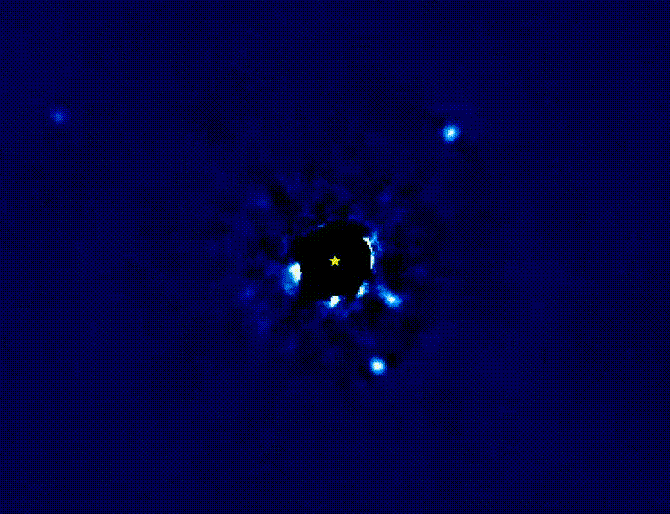Using the latest GRAVITY receiver on the Very Large Telescope Interferometer (VLTI), astronomers made direct observations of the extra solar world using optical interferometry for the first time. On the exoplanet, a complex atmosphere with iron silicate clouds and a raging storm on a planetary scale were found. The results of observations and a description of the method, which provides unique opportunities for studying the characteristics of many well-known exoplanets, are presented in the journal Astronomy & Astrophysics.
Optical interferometry serves as an accurate method for measuring changes in the optical length of optical fibers as a result of external influences. Thus, if any parameter of the physical field can be directly or indirectly associated with a change in the optical length of the optical fiber, this makes it possible to achieve high sensitivity and accuracy of its measurement.
Optical interferometry was first used to determine the detailed characteristics of an exoplanet. It allowed to collect and carefully separate the light coming from the atmosphere of the planet HR8799e and from its parent star, and to receive a magnificent detailed spectrum of unprecedented quality – ten times more detailed than it was possible before.
Our observations indicate the existence of a gas ball, illuminated from the inside, with the rays of light making their way through the areas of dark clouds covered with the storm. Convection acts on clouds consisting of iron silicate particles, which are destroyed, and their contents fall inside the planet. All this creates a picture of the dynamic atmosphere of the gigantic world in the process of birth, in which complex physical and chemical processes take place.
-Sylvester Lacour of Max Planck Institute for Extraterrestrial Physics (Germany), who led the research team
The exoplanet HR8799e, which is 5–10 times larger than Jupiter, lives in orbit of the main sequence star 129 light-years from Earth in the direction of the Pegasus constellation. In our system, the analogues of this “super-Jupiter” do not occur: the planet is at the same time much more massive and much younger than anyone circling the sun. By “astronomical standards”, a baby is only 30 million years old, which makes it possible to obtain from his observations unique information about the formation of planets and planetary systems. The conditions on the HR8799e surface are very inhospitable: the unspent energy of formation and the powerful greenhouse effect heated the exoplanet to a temperature of about 1000 °C.
Our analysis showed that the HR8799e atmosphere contains much more carbon monoxide than methane — this is not clear from the point of view of the chemistry of equilibrium processes. It seems to us that this unexpected result is best explained by vertical winds blowing in the upper layers of the atmosphere, which do not allow carbon monoxide to react with hydrogen and form methane.
-Sylvester Lacour
The researchers note that the detection of clouds of iron and silicate dust in HR8799e combined with an excess of carbon monoxide indicates the existence of a gigantic storm in the exoplanet atmosphere.
This result continues an impressive chain of discoveries made with the GRAVITY receiver, adding a new way of observing exoplanets to an already rich arsenal of methods and paving the way for many more impressive finds.
Optical interferometry – a breakthrough in observations of distant planets
Click To Tweet
The post Optical interferometry – a breakthrough in observations of distant planets appeared first on Upcosmos.com.
